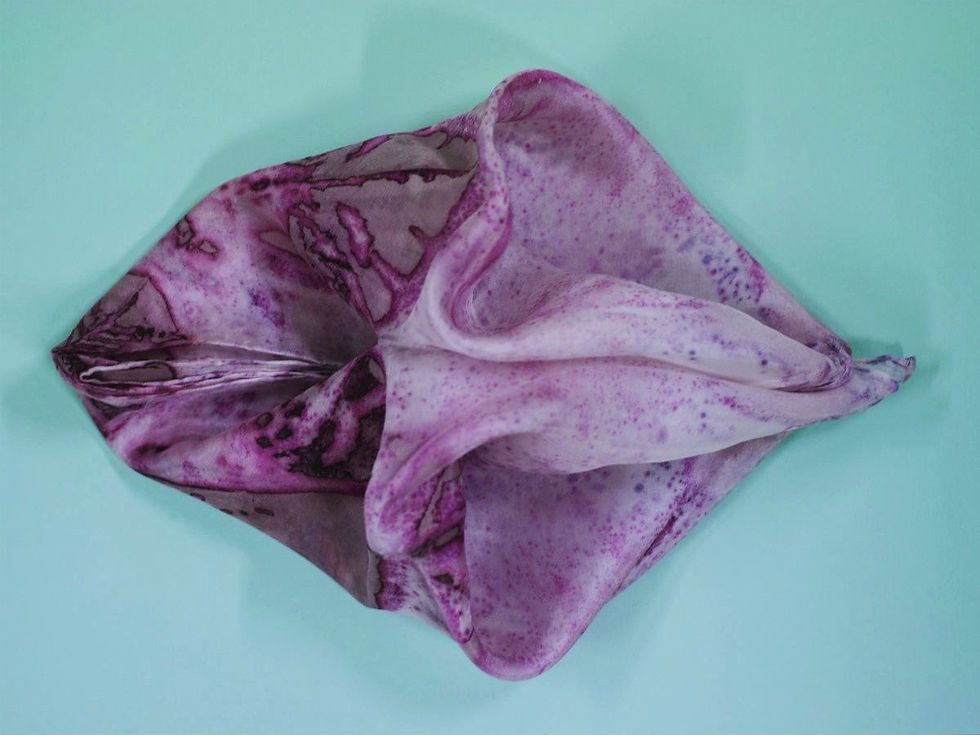E-Coli is Purple
- Victoria Manganiello
- Mar 15, 2021
- 2 min read
Updated: Mar 23, 2021

Silk dyed as part of Project Coelicolor; Image: Toby Coulson
We should all know the name, Natsai Audrey Chieza. In the face of an incredibly fragile environmental crisis threatening our planet and our lives, made worse and worse by the fast fashion industry full of colorful fabrics, Chieza, and her company Faber Futures are working on a solution. Designer, speaker, leader: Chieza pioneered the application of a microbial-based pigment dye for textiles and has been awarded the Index Award 2019 for the chemical-free, water-saving biofabrication system she developed. Her method uses up to 500 times less water and zero synthetic chemicals, compared to commonly used dying practices.

Synthetic Dye Waste; Image: Kopiersperre, Wikimedia Commons
Dying one ton of fabric requires nearly 200 tons of water. Once processed, that water contains traces of the nearly 8,000 chemicals and carcinogens found in standard synthetic dyes, making textile dying one of the most polluting aspects of garment production. What might Chiezaʼs discovery look like if we applied it to garment and textile factories around the world? What other implications might her developments have for sustainability in textiles? This writer would like to find out, ASAP. Reader?

("TG2017_082917_1BH6136_1920" by TED Conference is licensed with CC BY-NC 2.0.)
You can watch her TED talk and find her on the recent list of the top women to watch in architecture. Chieza is a member of the current session of the World Economic Forum's Global Futures Council on Synthetic Biology, contributing to the industry's roadmap for a world changed by COVID-19. She’s changing the world.
In an effort to understand further, we experimented with Amino Labs (founded by Julie Legault, born from a kitchen hack event with her MIT community).

Bacteria function like a network, communicating between members to offer information about where to spread. In the face of danger (antibiotics), certain bacterias will produce a pigment as a warning signal, warning other bacteria to stay away from the area. And depending on the antibiotic, that pigment signal might be blue, purple, pink, and more. So, to control pigment generation, we can introduce antibiotics to a bacterial environment strategically. The process does not require water and when facilitating properly, is perfectly safe. After the process is over, the textile can be sterilized, leaving behind simply the beautiful textiles and none of the bacteria.

Pictured here, our experiments with E-Coli. You can learn more about this and other biology/textile intersections from our friends at Fabricademy. And look out for more from Natsai Chieza and Faber Futures.

Bibliography:



Comments